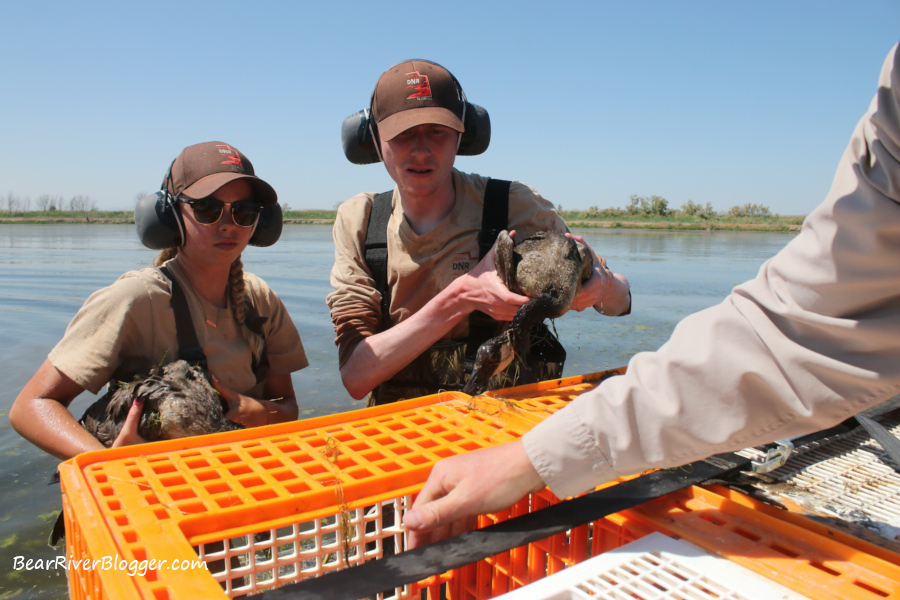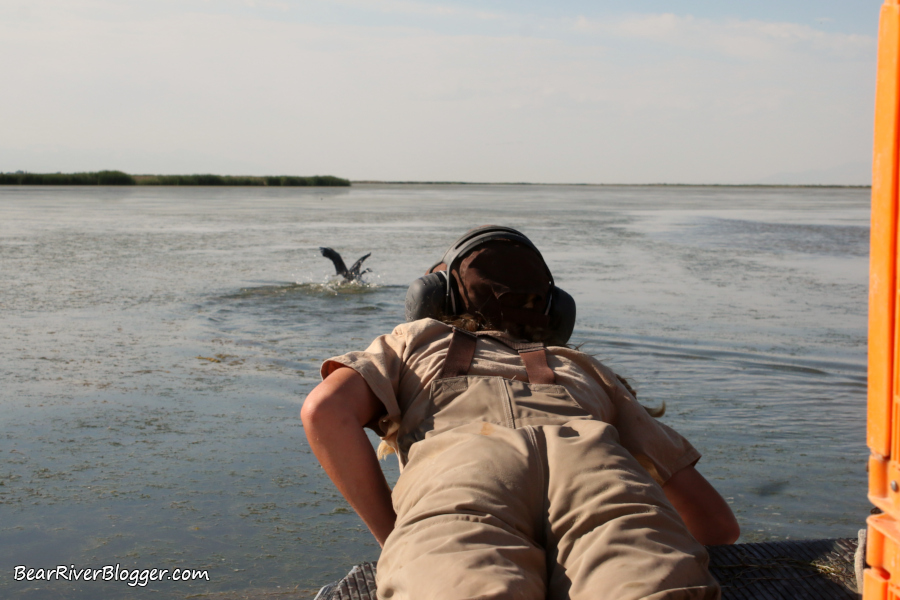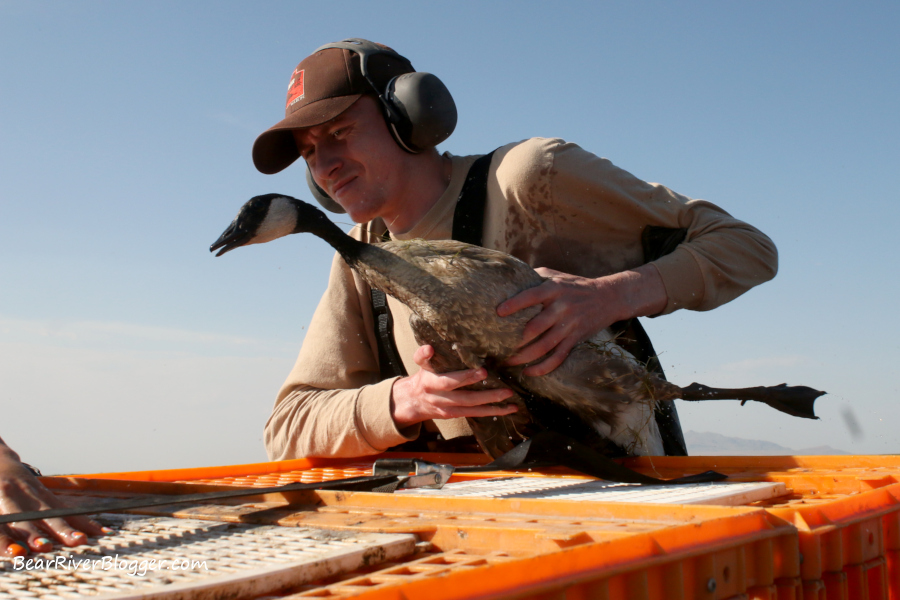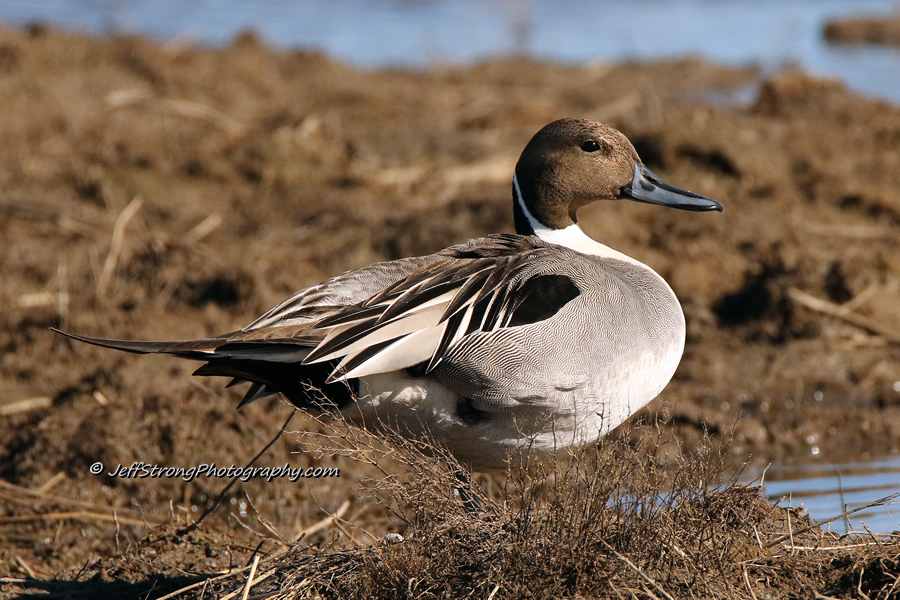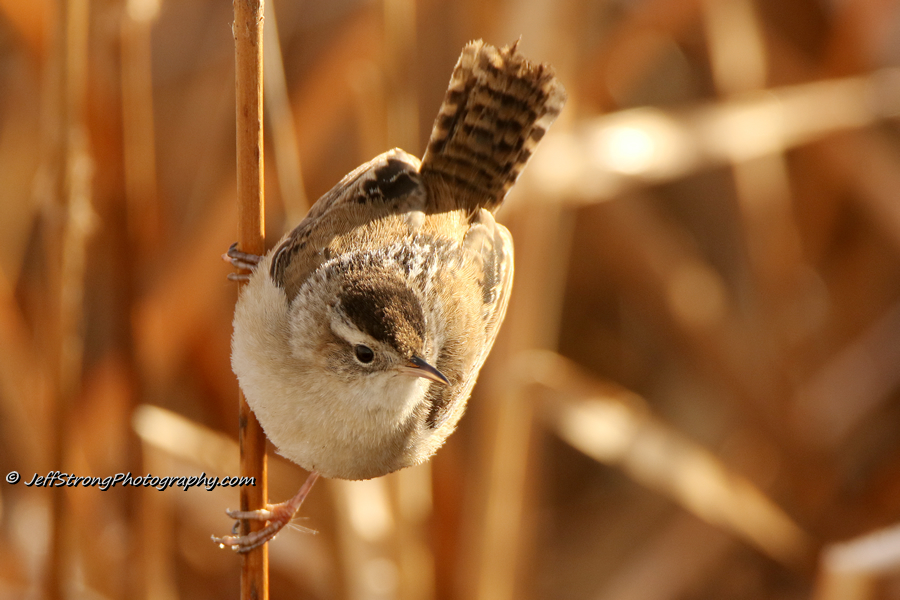It might seem like a brain-scratcher to ponder how a simple 30-minute airboat ride actually helps biologists delve into the lives of thousands of geese for years to come but that is exactly how the Utah Division of Wildlife Resources has been unraveling the mysteries of goose migration and longevity since 1965 when Utah’s Canada goose leg-banding program first took flight.
According to Rich Hansen, manager of Ogden Bay WMA and Waterfowl Banding Coordinator for the Utah Division of Wildlife Resources, Utah’s Canada goose leg banding program is heralded as the longest continuous running data set in the United States, occurring every year since its inception 59 years ago and is the cornerstone of how Canada geese populations are tracked and managed in Utah.
Interestingly enough, all of it literally starts with a short but very intense ride on an airboat and I know it doesn’t make much sense at this point so let me explain.
Last week I was invited to tag along on one of those airboat rides (actual video posted below) to get a first-hand look at how biologists safely capture, tag, and release Canada geese back into the wild in order to gather important data regarding their migration routes, local movements, as well as survival and mortality rates, all critical information needed to manage their populations each year with regards to the effects waterfowl hunting season has on the overall Canada goose population in Utah and the western United States.
Simply put, to understand geese, or any bird for that matter, when and where they migrate to and how long they live is vital information needed by biologists.
This means individual birds need to be captured and uniquely marked so they can be identified again at some point in the future which is the purpose of the leg-banding program where small, lightweight aluminum bands are permanently affixed around a goose’s leg, hereto and forever identifying that particular bird with a unique number as to when and where it was originally captured, if it’s an adult or juvenile at the time of capture, and the sex of the bird.
If that same goose is harvested during hunting season, re-captured later on, or even photographed as I have done on several occasions and the leg band number is gathered and reported to the USGS Bird Banding Laboratory the original data is compared to when and where the second occurrence happened and vital knowledge about Canada geese starts to take shape with regards to movements and survival rates.
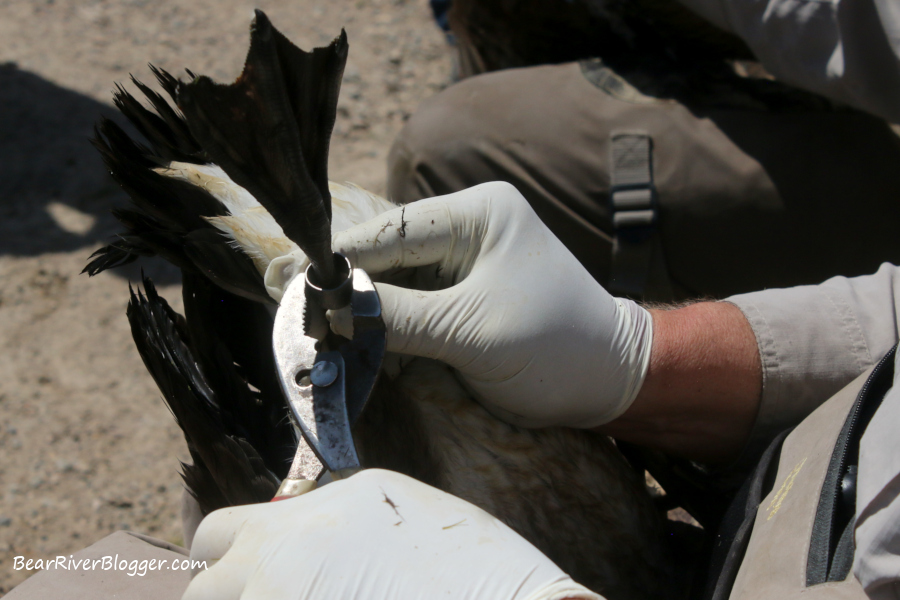
But it all begins with safely capturing the geese, not an easy task with any bird, mind you, but a very tall order with waterfowl that live in boggy swamps and inaccessible wetlands most of their lives.
In fact, according to Hansen, the only way leg banding is even possible stems from the yearly molt where Canada geese lose their primary flight feathers during the month of June.
This annual occurrence renders the geese flightless for a few weeks, encouraging the geese to “flock-up” in sizeable groups on the large open-water impoundments of Ogden Bay WMA as a result, possibly for “safety in numbers” but definitely out of reach from any capture efforts from shore.
That is where the airboats come in and how biologists capture the geese one by one in order to tag them with the lightweight leg bands.
Several airboats are on hand for this event, each vessel adorned with a very experienced driver, several bird handlers, and 4 large plastic bird crates to temporarily hold the geese.

As shown in the accompanying video I recorded below, the bird handlers literally lay on the front deck of the boat as it glides quickly and effortlessly over the shallow wetlands, sometimes stopping and turning at a moment’s notice while in close pursuit to literally catch each and every goose by hand as the bird typically dives in the shallow water trying to evade capture.
Once a goose is caught by one of the handlers it is quickly placed in plastic crates and the task is repeated again and again until the containers are full or all the geese on the impoundment are captured where they are then taken ashore to be sexed, banded, and all the pertinent data is recorded before the entire flock of geese is released as a group back into the wetlands shortly afterward.
Hansen noted that so far this year about 1,500 Canada geese have been banded during the past week with this morning’s effort adding about 100 geese to the tally and 150 more geese expected to be caught, banded, and released between 2 other locations for the remainder of the day on both Ogden Bay and nearby Howard Slough.
He also mentioned a goose that was caught a few days prior during banding efforts at Farmington Bay was tagged in 2005 and revealed geese can live for 20 years or more, something that would never have been known without the bird banding program and the information it provides.
Canada geese are a hunted species of bird during the fall waterfowl season and Hansen stated banding data is most crucial for setting appropriate daily bag limits each year as well as making any needed annual changes to that number whenever the population starts to increase or decrease from a normal and sustainable level.

One of the most interesting facts Hansen mentioned during the banding event about what can be learned from banding data shows young birds he and his crew tag at Ogden Bay in June sometimes go on a “molt migration” to Saskatchewan and Alberta the following year to spend the summer in Canada with the females eventually returning to where they were fledged to breed once they become of age, depicting how strong their instincts are to return to the place where they took their first flight for their own nesting purposes as adults.
All of this and so much more interesting and important information pertaining to Canada geese is gathered each year with the efforts of Rich Hansen, all the DWR staff, and volunteers who work hard to continue the Utah Division of Wildlife Resources Canada goose banding program for a couple of weeks each and every summer at not only Ogden Bay but in a variety of other locations as well throughout Utah.
Much of what we learn and know about Canada goose migration can only come from tagging, releasing, and observing that same bird later on in a different location so next time you see a Canada goose do what I do, look at the legs and feet for an aluminum band and realize that leg band is helping biologists learn more about geese when the number is reported and it all started with a short but very intense airboat ride across a boggy marsh.

If you like birds and any of the other interesting creatures in nature, we offer you to head on over to our subscribe page and sign up for email notifications for future blog posts where we share our love of nature through both photography and the written word.

(Capturing Canada Geese For Leg-banding With Airboats. For short nature photography tips and interesting stories about the natural world around us, subscribe to our Bear River Blogger channel on YouTube for videos and updates from our travels while out in nature, both on and off of the famed Bear River Migratory Bird Refuge.)

